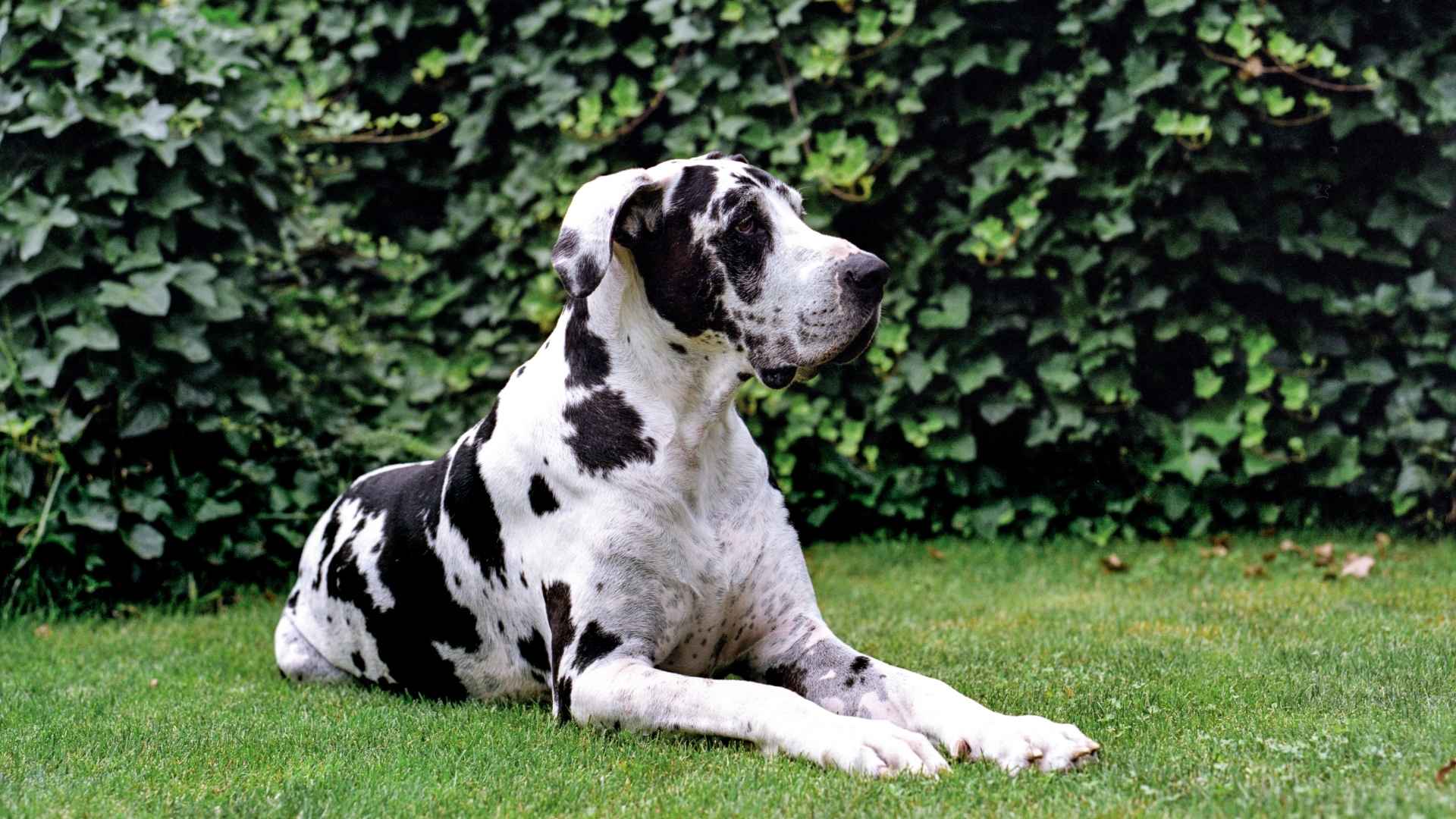Love big dogs but not the tumbleweeds of hair or hours of brushing? You’re not alone. For many dog lovers, especially those with allergies or busy lifestyles, finding a large breed with low grooming needs is a dream come true. While no dog is completely non-shedding, several big dog breeds shed far less and require minimal upkeep when it comes to brushing, trimming, or bathing.
Some of these breeds even fall under the “hypoallergenic” category, meaning they are less likely to trigger allergic reactions, though it’s worth noting that no dog is 100% allergy-proof. Still, these low-shedding, easy-care breeds make wonderful companions without demanding hours at the grooming table or constant lint-rolling of your clothes.
Whether you’re living in a suburban home or a spacious apartment, these low-maintenance large dogs strike the perfect balance between presence and practicality. They offer the loyal companionship, protection, and playfulness you want, without leaving your couch covered in fur.
Let’s dive into seven large breeds that offer big love with less mess!
Large Dog Breeds With Low Grooming Needs
1. Great Dane
Key Traits:
Giant size with a gentle temperament
Short, low-maintenance coat
Moderate energy level and exercise needs
Why it works for low-grooming households:
Great Danes have short, dense coats that shed year-round but only require brushing once a week—daily brushing during their semi-annual shed helps control loose hair. They don’t need trimming or specialized grooming, making coat care simple despite their massive size.
These dogs are known for their calm, friendly demeanor and love of being close to their humans. While their sheer size can be intimidating, Great Danes are affectionate and patient, often unaware that they’re not lap dogs.
Exercise needs are moderate; two or three brisk walks a day usually suffice. Puppies under two years old shouldn’t be over-exercised due to rapidly developing joints and bones.
Although they thrive in homes with yards, Great Danes can adapt to apartments if given regular walks and space to stretch out. Their low barking tendency and relaxed indoor behavior make them surprisingly suitable for quieter living environments.
Danes are prone to some health issues like bloat and hip dysplasia, but with proper feeding schedules, vet care, and early training, they make dependable, loving companions that require little coat maintenance.
2. Doberman Pinscher
Key Traits:
Smooth, short-haired coat with moderate shedding
High intelligence and energy
Confident, loyal, and alert nature
Why it works for low-grooming households:
The Doberman’s short, sleek coat is easy to maintain, requiring only a weekly brushing to reduce loose hairs and keep it glossy. They don’t require trims, professional grooming, or regular baths unless they get into something messy.
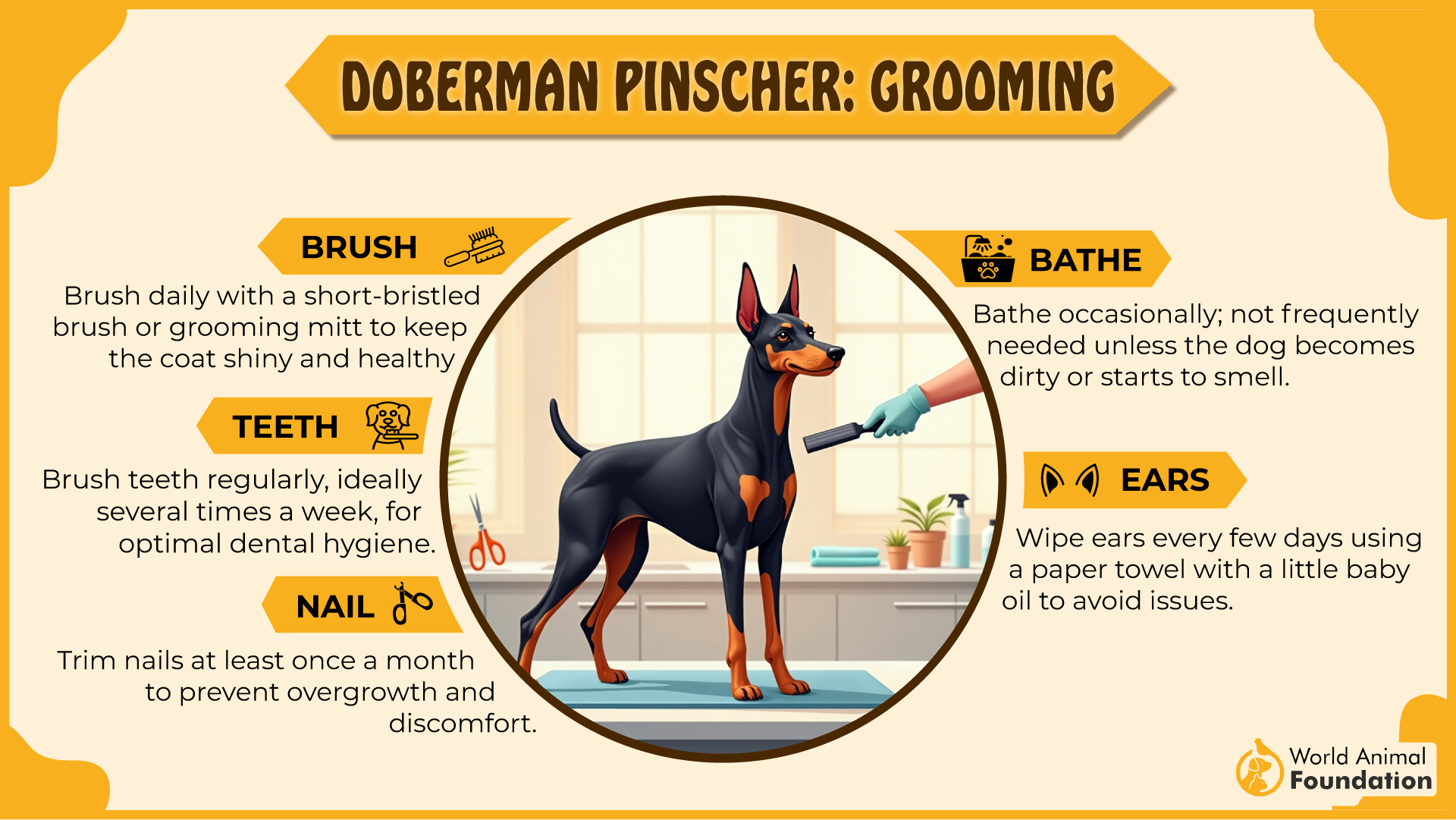
Muscular and athletic, Dobermans are built for work and performance but love being part of the family. They are affectionate, protective, and thrive when they’re both mentally and physically engaged.
As per Purina, their exercise needs are high; daily walks, runs, or agility games help burn off energy. They enjoy structured routines and excel in obedience, tracking, and protection work, but also bond deeply with their families at home.
Socialized early, they’re usually good with children and other pets, though supervision is needed given their strength and vigilance. They shed modestly and are generally odor-free, making them a clean, low-grooming option for active households.
Dobies are prone to conditions like cardiomyopathy and bloat, but responsible breeding and regular vet care help minimize risks. Their combination of intelligence, cleanliness, and loyalty makes them a go-to for experienced owners looking for a low-maintenance large breed.
3. Mastiff
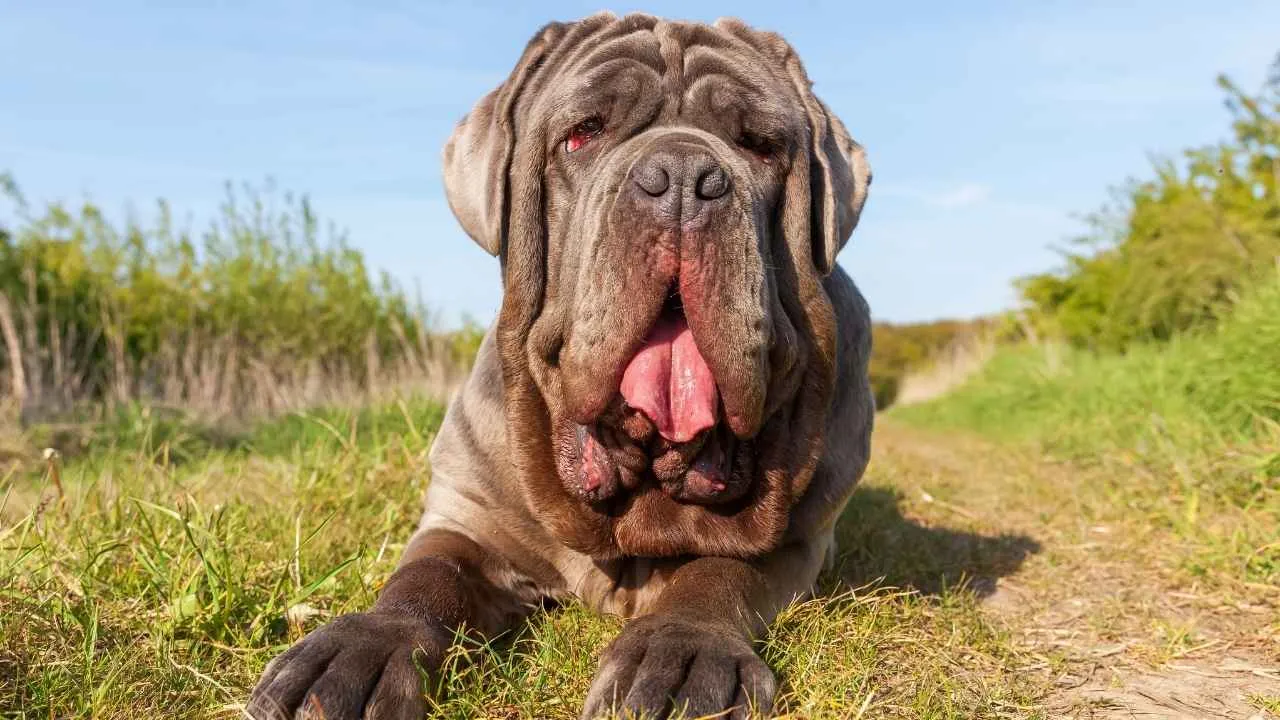
Key Traits:
Giant size, deeply affectionate, and patient
Double coat with seasonal shedding
Moderate energy, low grooming maintenance
Why it fits low-grooming needs:
Despite their massive build, Mastiffs have short, dense double coats that require only occasional brushing, every few days during normal months, and daily during their semi-annual shedding seasons. Their grooming routine is simple compared to their size, though their facial wrinkles and ears need routine cleaning.
Mastiffs are incredibly calm and gentle, with a temperament that leans more toward lounging than leaping. Their slow, lumbering gait and easy-going personality make them lovable giants that are deeply loyal to their families and protective without aggression.
They require moderate daily walks but should not be over-exercised, especially in their first two years, to protect growing joints. Their large frame demands thoughtful movement and a low-impact routine.
Drooling is common and frequent, so owners should be prepared for cleanup. These dogs aren’t overly vocal, but their deep bark and sheer size make them effective deterrents.
Early socialization is critical—they are instinctively wary of strangers and other dogs, but can live peacefully with training. Though imposing in stature, Mastiffs are gentle in spirit and require gentle, patient handling.
4. Greyhound
Key Traits:
Tall, lean build with a very short coat
Quiet, calm, and extremely low grooming needs
Low exercise requirements despite athletic history
Why it fits low-grooming needs:
Greyhounds have one of the easiest coats to maintain: short, smooth, and nearly odorless. They shed minimally and require only the occasional rubdown or light brushing to keep their coat healthy and clean.
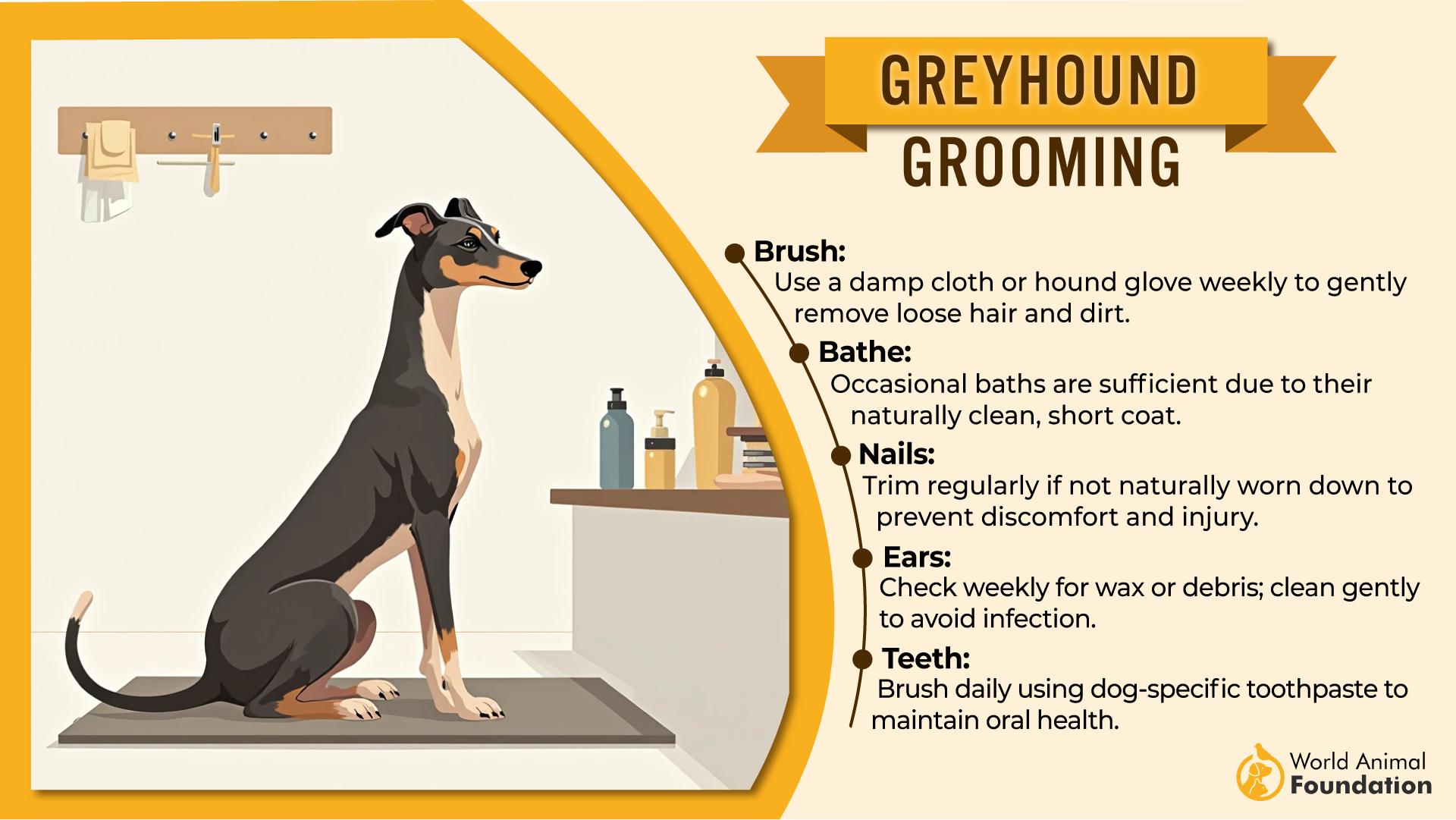
Though built for speed, Greyhounds don’t require a lot of exercise—two short 20-minute walks a day keep them happy and healthy. They burn energy in brief bursts and then transform into mellow loungers, often napping for hours on end.
Their affectionate and sensitive nature makes them ideal for a wide variety of households, including those with kids, seniors, or even apartment dwellers. Many ex-racing Greyhounds adjust easily to home life, with most retiring between ages 3 and 5.
Greyhound Trust Organization states that they are usually very social with people and dogs, though care must be taken when introducing them to small animals due to their sighthound instincts. Some can live peacefully with cats; others may always see them as prey.
While their lean body needs soft bedding, their quiet, clean habits and low grooming needs make them one of the easiest large dogs to care for, physically and emotionally low-maintenance companions.
5. Weimaraner
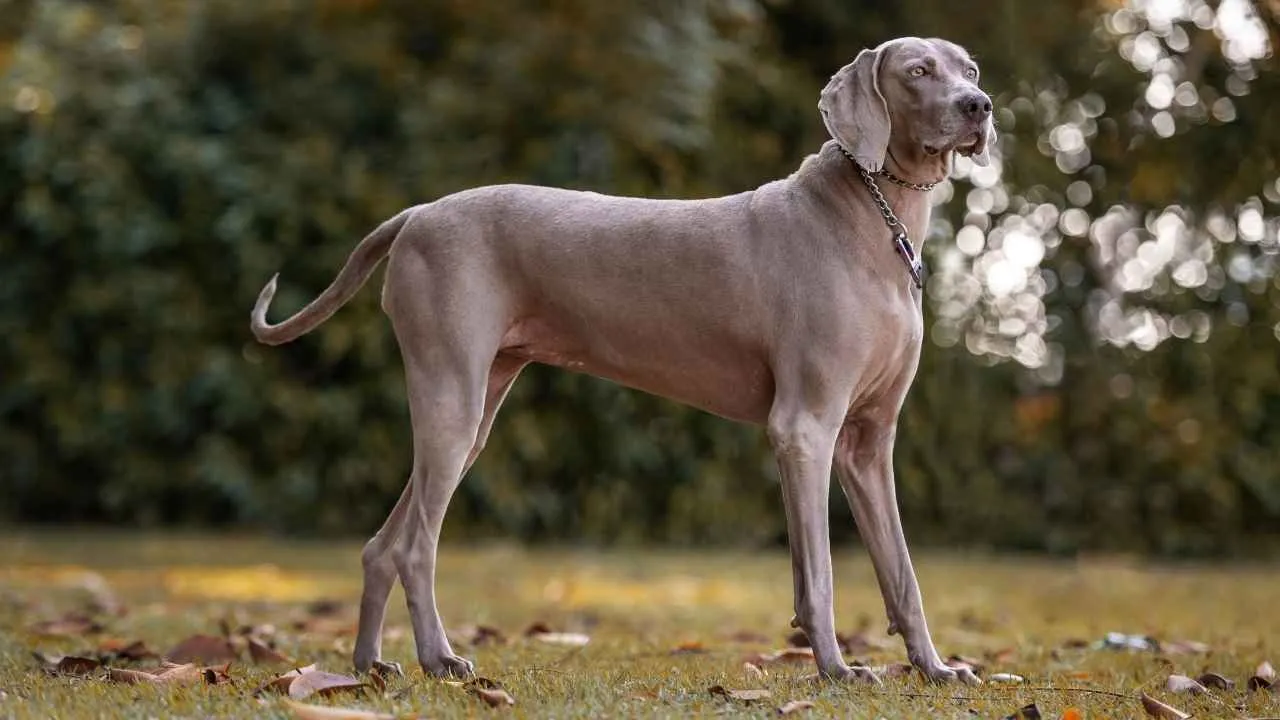
Key Traits:
Athletic and muscular with a short, sleek coat
Highly energetic and intelligent
Low grooming needs but high mental stimulation required
Why it fits low-grooming needs:
The Weimaraner’s iconic silver-gray coat is smooth, flat, and “wash and wear.” It requires little more than occasional brushing with a curry brush to maintain its sleek appearance and reduce moderate shedding.
Originally bred for hunting large game, Weimaraners are intelligent, high-energy dogs that need vigorous daily activity, running, hiking, or mentally engaging games. Their coat is low-fuss, but their minds are not; they crave interaction and purpose.
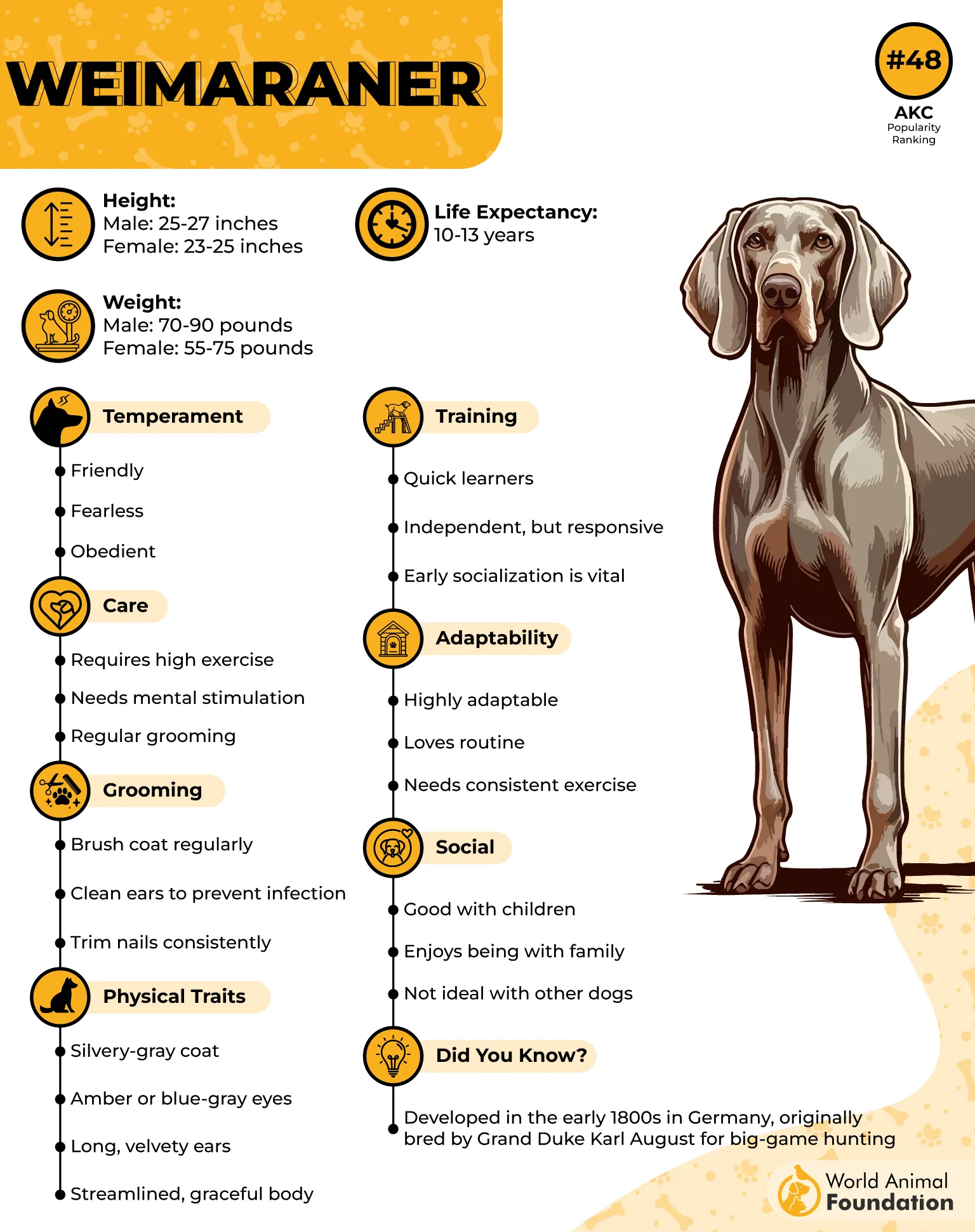
They are affectionate and loyal, forming strong bonds with their humans and showing distress when left alone for long periods. Without mental and physical engagement, they can become destructive or anxious.
Weimaraners don’t drool or smell, and they rarely require baths unless they get into messes. However, they are not a good fit for households with cats or small pets due to a high prey drive.
Well-socialized Weimaraners are good with children and can be excellent watchdogs. Their low grooming demands contrast with their high activity needs, ideal for experienced owners seeking a clean but highly driven companion.
6. Rhodesian Ridgeback
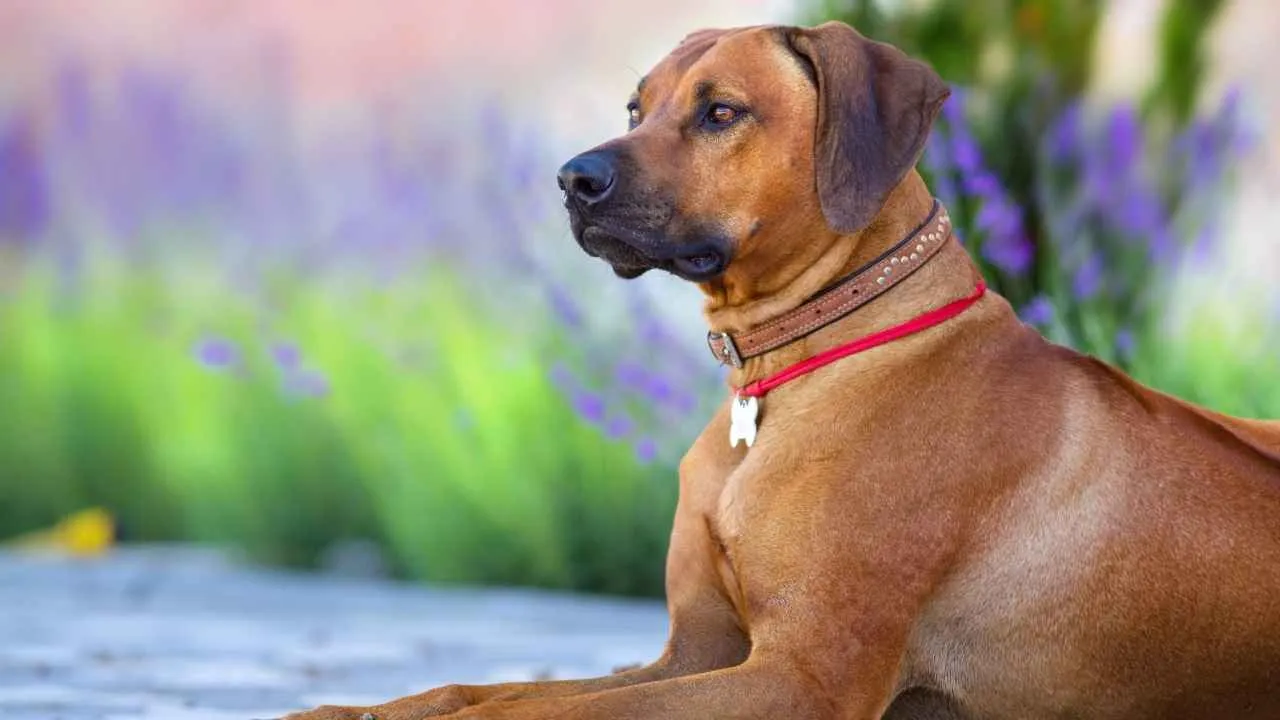
Key Traits:
High stamina and exercise needs
Short, low-maintenance coat
Independent and intelligent with a strong prey drive
Why it fits low-grooming needs:
Rhodesian Ridgebacks have short, sleek coats that require minimal grooming, just a weekly brushing to manage loose hair. While they do shed lightly year-round, especially in spring and fall, their grooming needs are light compared to many large breeds.
Originally bred in Africa to track and hold lions at bay, Ridgebacks are incredibly athletic and require extensive daily exercise. They need at least two hours of physical activity per day, including off-leash running in secure areas, scent games, and mentally stimulating play.
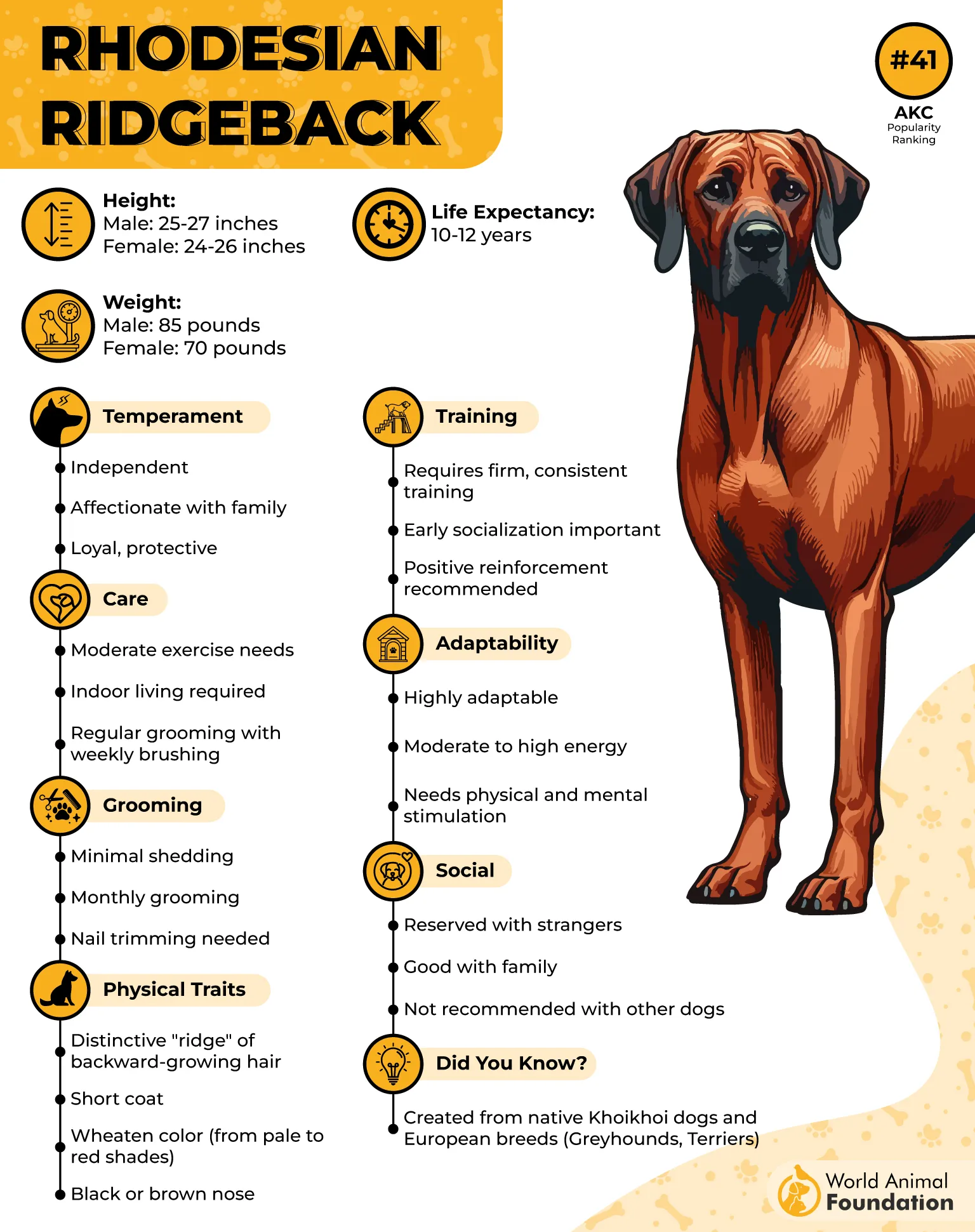
PDSA states that their independence and strong prey drive mean they’re not ideal for homes with smaller pets, but they can coexist with cats they were raised with. Socialization is key, as they can be wary of new dogs and excitable around unfamiliar people.
With proper training, Ridgebacks can be calm and affectionate companions for families with older children. Their size and energy levels, however, make them a poor match for smaller children or less active households.
These dogs thrive in structured routines and enjoy outdoor adventures like hiking and swimming. Despite their high activity needs, their low grooming requirements and muscular build make them a favorite among active dog lovers seeking a wash-and-go companion.
7. Anatolian Shepherd
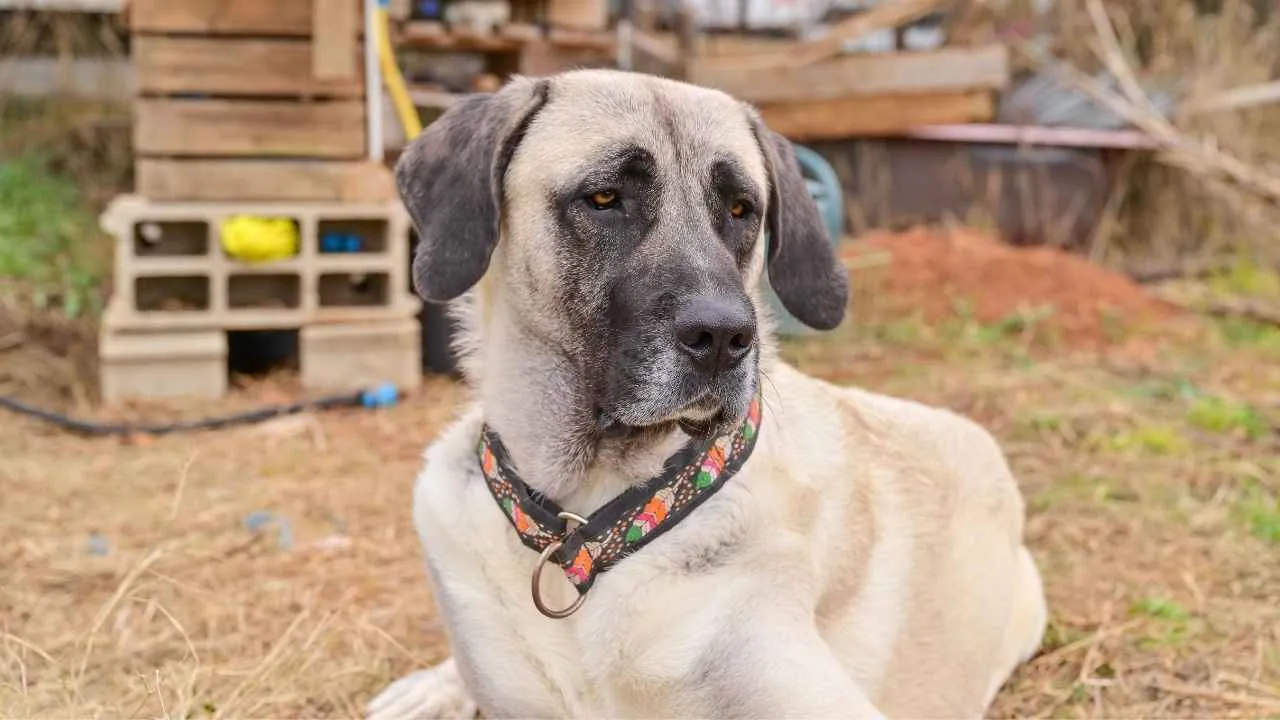
Key Traits:
Powerful, independent, and territorial
Low-maintenance coat
Requires early socialization and firm, consistent training
Why it fits low-grooming needs:
Anatolian Shepherds have short, dense coats that only require weekly brushing, with heavier shedding periods in spring and fall. They don’t require trimming or professional grooming, and baths are needed only occasionally, making them very low-maintenance when it comes to coat care.
Bred in Turkey to guard livestock in remote terrain, Anatolians are highly protective and deeply loyal but not overly affectionate or cuddly. They are calm, watchful, and often aloof, especially with strangers. Their instinct is to guard their home and family, so early and thorough socialization is essential.
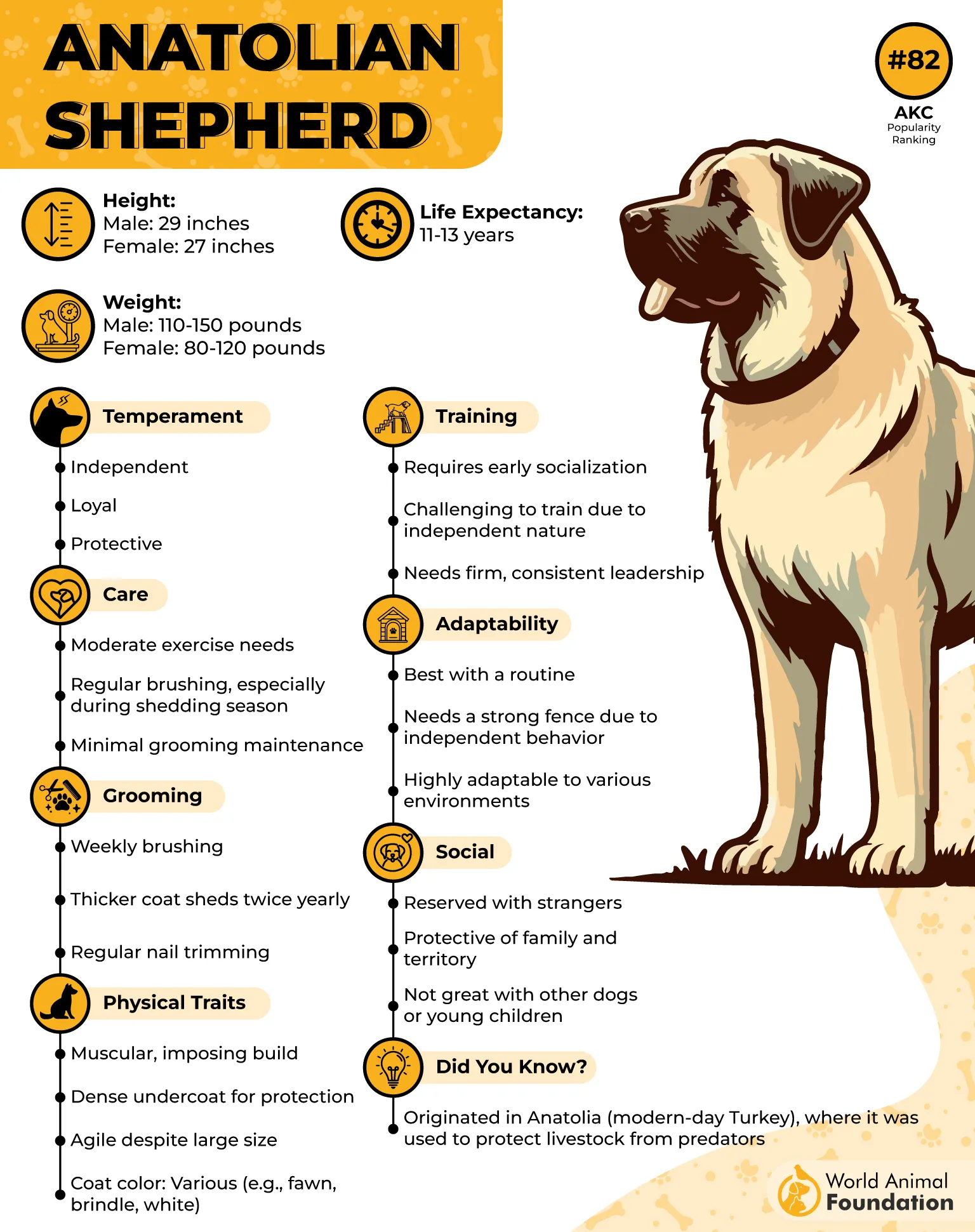
They are large, powerful dogs that need plenty of space, ideally a large, securely fenced yard. While they aren’t overly energetic, they still need at least an hour of exercise daily and benefit from mental stimulation through training, games, and scent work.
Anatolians are not well-suited to apartment living or first-time dog owners. Their size, strength, and stubborn streak demand experienced, patient handlers who can provide clear, consistent leadership without harshness.
Despite their independence, Anatolians are generally healthy and long-lived for their size, and their easy-care coat makes them a strong choice for those seeking a large guardian dog without the high grooming demands of many other working breeds.
Conclusion
Not every dog needs hours of brushing or trips to the groomer. For those who love large or medium-sized breeds but dread the upkeep of a high-maintenance coat, there are certain breeds that fit the bill perfectly. These low-maintenance dog breeds offer the best of both worlds: a strong, loyal companion with minimal grooming needs and a manageable exercise routine.
Dogs with smooth coats, like the Doberman Pinscher or Greyhound, require only regular brushing to stay clean and healthy. Others, like the Great Dane and Mastiff, may be known as gentle giants, but they need very little grooming beyond an occasional bath and basic nail trims. Even hypoallergenic dog breeds like the Standard Poodle or wire-haired types typically just need frequent brushing or professional grooming to keep their curly coats tangle-free.
These laid-back dogs or low-energy breeds are excellent for busy owners, first-time dog parents, or those who can commit only a few hours a week to coat care and exercise. Whether you’re drawn to a low-shedding dog or one that thrives on short bursts of activity, there’s a low-maintenance dog out there ready to become your next great companion.


